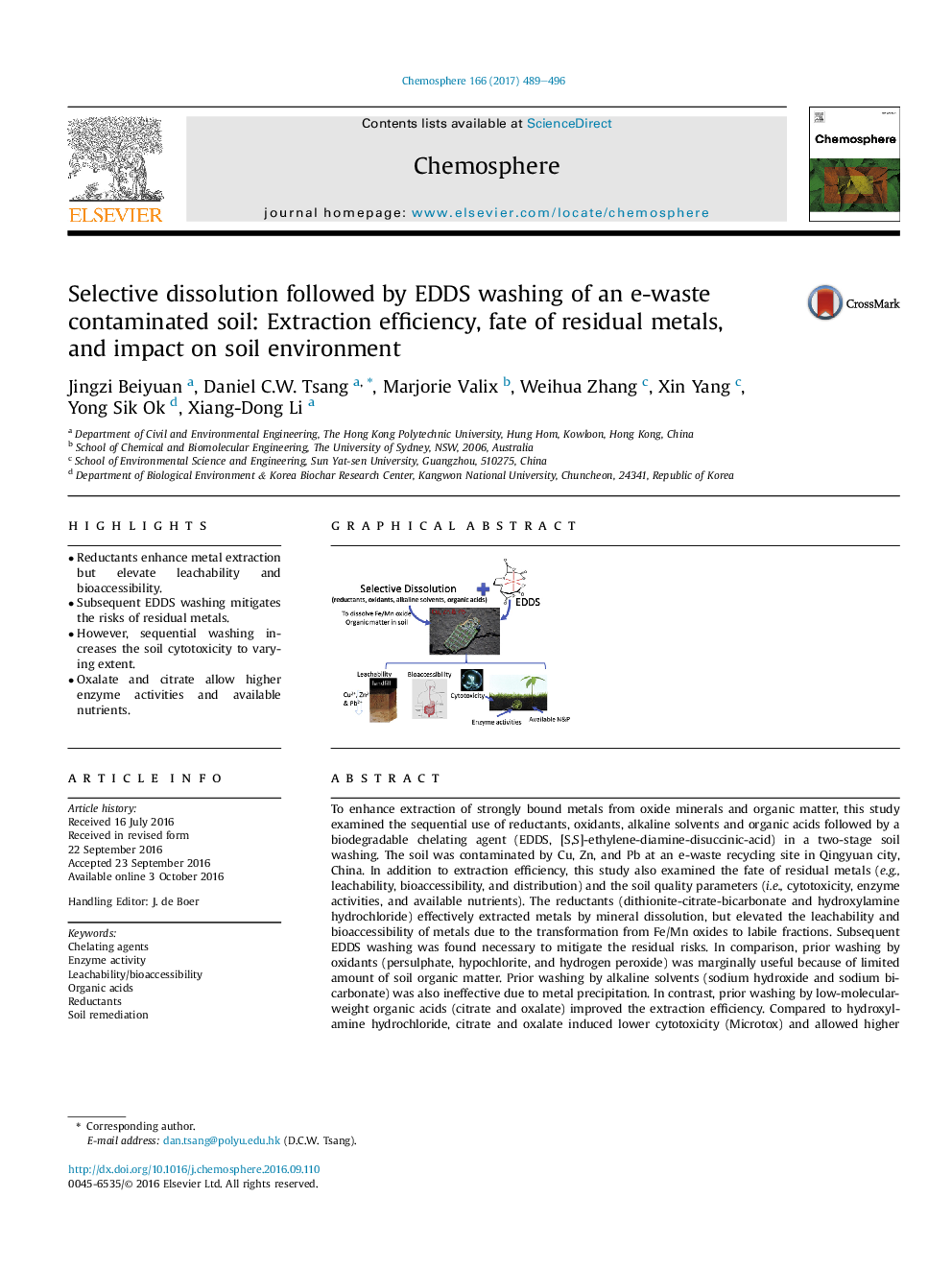| کد مقاله | کد نشریه | سال انتشار | مقاله انگلیسی | نسخه تمام متن |
|---|---|---|---|---|
| 6306402 | 1618805 | 2017 | 8 صفحه PDF | دانلود رایگان |

- Reductants enhance metal extraction but elevate leachability and bioaccessibility.
- Subsequent EDDS washing mitigates the risks of residual metals.
- However, sequential washing increases the soil cytotoxicity to varying extent.
- Oxalate and citrate allow higher enzyme activities and available nutrients.
To enhance extraction of strongly bound metals from oxide minerals and organic matter, this study examined the sequential use of reductants, oxidants, alkaline solvents and organic acids followed by a biodegradable chelating agent (EDDS, [S,S]-ethylene-diamine-disuccinic-acid) in a two-stage soil washing. The soil was contaminated by Cu, Zn, and Pb at an e-waste recycling site in Qingyuan city, China. In addition to extraction efficiency, this study also examined the fate of residual metals (e.g., leachability, bioaccessibility, and distribution) and the soil quality parameters (i.e., cytotoxicity, enzyme activities, and available nutrients). The reductants (dithionite-citrate-bicarbonate and hydroxylamine hydrochloride) effectively extracted metals by mineral dissolution, but elevated the leachability and bioaccessibility of metals due to the transformation from Fe/Mn oxides to labile fractions. Subsequent EDDS washing was found necessary to mitigate the residual risks. In comparison, prior washing by oxidants (persulphate, hypochlorite, and hydrogen peroxide) was marginally useful because of limited amount of soil organic matter. Prior washing by alkaline solvents (sodium hydroxide and sodium bicarbonate) was also ineffective due to metal precipitation. In contrast, prior washing by low-molecular-weight organic acids (citrate and oxalate) improved the extraction efficiency. Compared to hydroxylamine hydrochloride, citrate and oxalate induced lower cytotoxicity (Microtox) and allowed higher enzyme activities (dehydrogenase, acid phosphatase, and urease) and soil nutrients (available nitrogen and phosphorus), which would facilitate reuse of the treated soil. Therefore, while sequential washing proved to enhance extraction efficacy, the selection of chemical agents besides EDDS should also include the consideration of effects on metal leachability/bioaccessibility and soil quality.
169
Journal: Chemosphere - Volume 166, January 2017, Pages 489-496